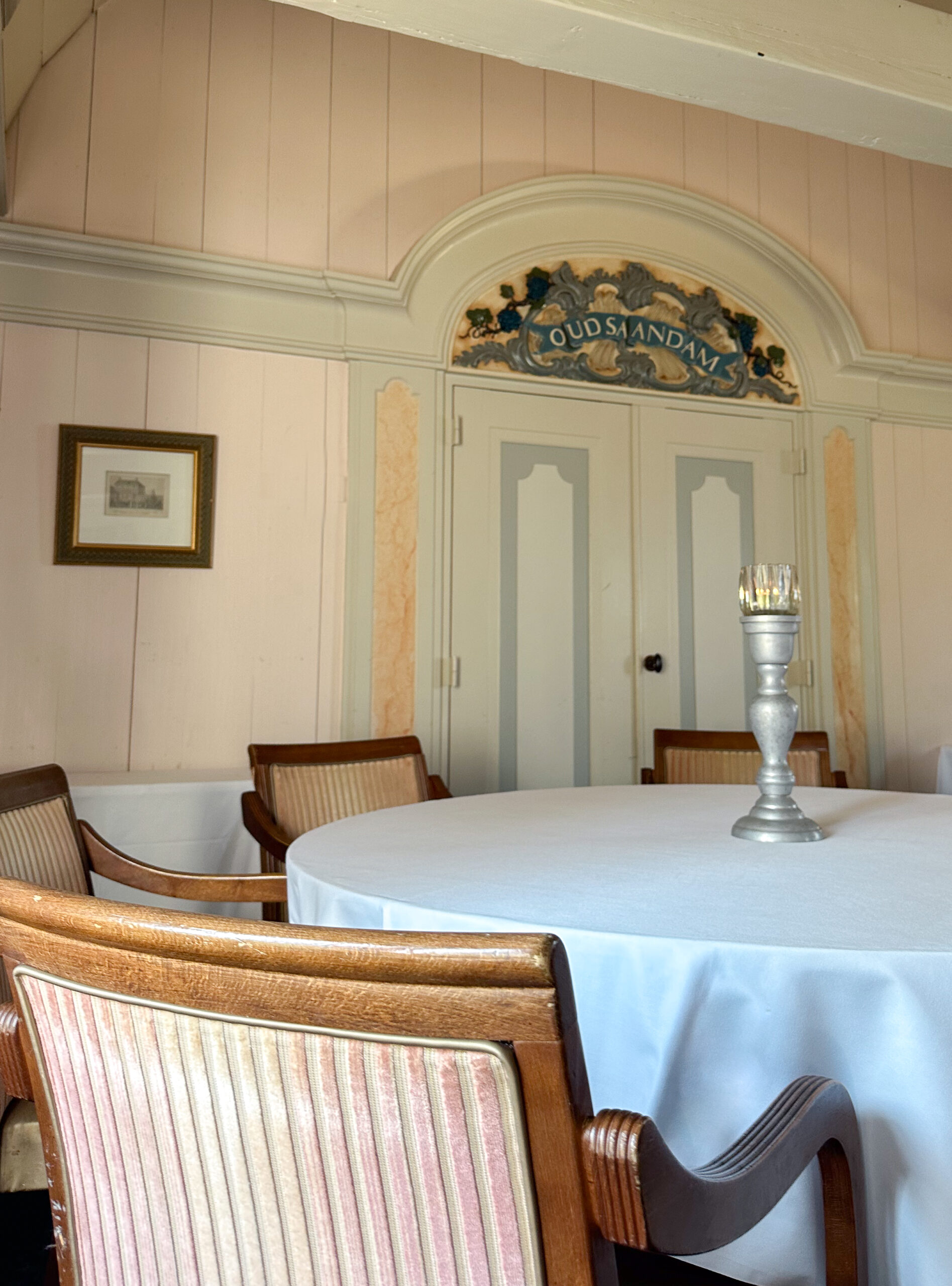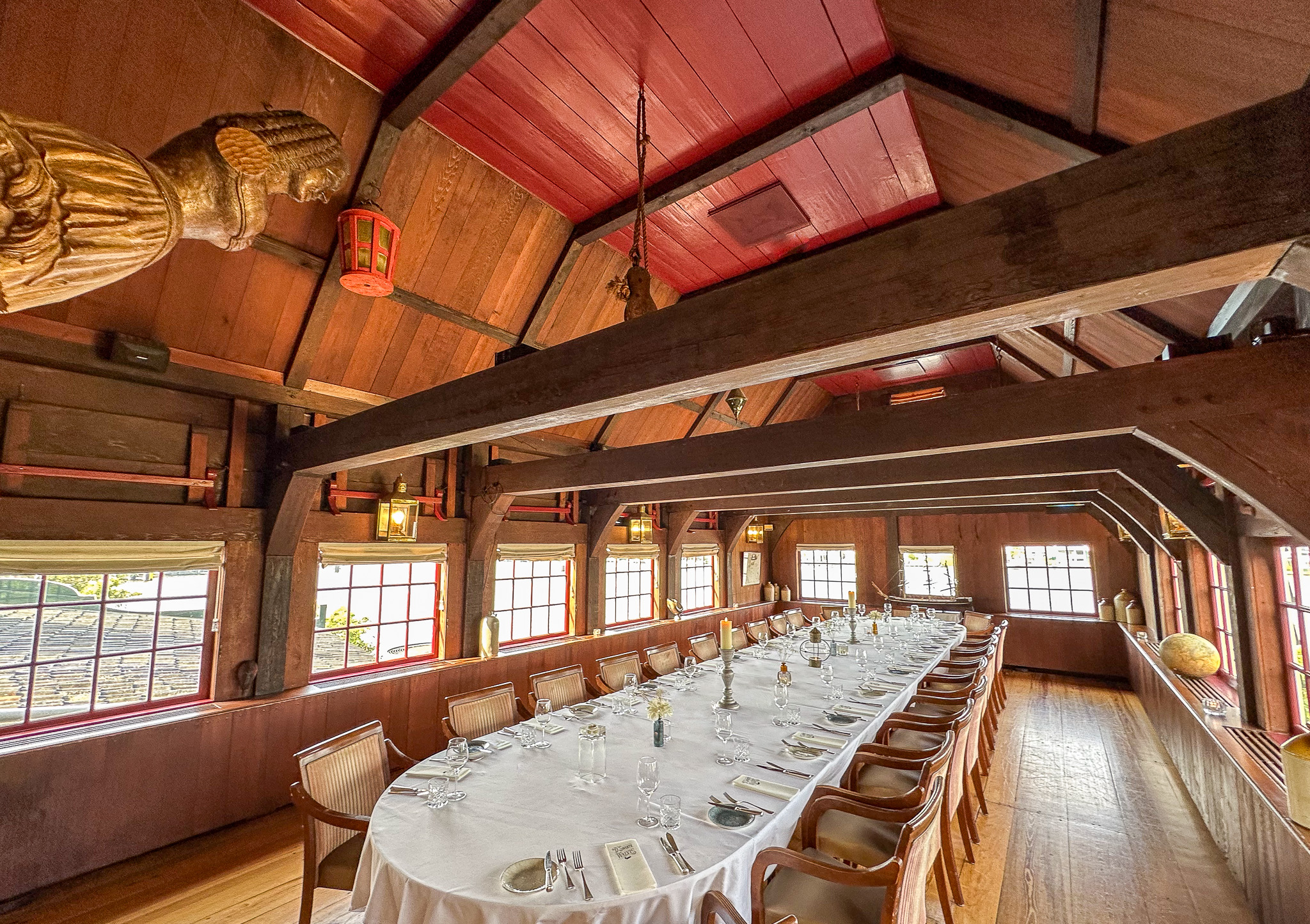weeshuis (serre)
The Orphanage originates from Westzaan and was located behind the large church. During a so-called ’towerfall’, the tower damaged the orphanage. The restaurant area served as the living room for the orphans, with the Regent’s Room behind it, a neat room where those who governed over the orphans resided. The fireplace in the restaurant, called “smuiger” in the Zaans dialect, is a Delft-style fireplace, but executed in Zaans red. The depiction on the fireplace is Solomon’s judgment. This was not originally in the orphanage but belonged to the Duyvis family. The cupboard in the Regent’s Room is an original Assendelft cupboard. Paintings depicting the fall of the church tower in Westzaan, with the orphanage behind it, hang in various places in the building.
The Weesmeester room on the first floor is the former dormitory of the orphanage. This room is adorned with beautiful tile panels depicting windmills. In the Weesmeester bar, small commemorative tiles can be found about the origin of the building. Also, in 1994, the last tile was placed here in memory of the devastating fire on January 1, 1994. The fire-damaged smuiger was completely restored and placed back in the Weesmeester room. This smuiger is unique because it is a ‘salon’ smuiger; the beautiful tiled side of the smuiger was in the salon, and on the other side was the kitchen where it was used for heating. As a result, the heat came into the salon.












terrace facing the river Zaan
How would you explain if you cater the only terrace overlooking the Zaan with a view at the world-famous Windmill-panorama? Pretty much THE reason for many of the millions of people visiting the Zaanse Schans every year. Having a nice lunch in the spring or sipping on your Aperol Spritz at sunset, watching the sun disappear behind the 17th century ‘skyline’? It does not get any better than this probably…
vleethuis (the bar)
The Vleethuis is a replica of the original that stood in a dilapidated state on the other side of the Zaan. Just like the original, even the weather vane – the whale – is on the roof. Vleethuis means: ‘house on the vliet’, or warehouse on the water and was intended as storage for fishermen and whalers, who had, at that time in the 17th century, an open connection to the sea from Zaandam. The hatches in the Vleethuis could be opened with blocks to allow passage if there were wet nets hanging.










commandeurskamer (1st floor)
The Vleethuis is a replica of the original that stood in a dilapidated state on the other side of the Zaan. Just like the original, even the weather vane – the whale – is on the roof. Vleethuis means: ‘house on the vliet’, or warehouse on the water and was intended as storage for fishermen and whalers, who had, at that time in the 17th century, an open connection to the sea from Zaandam. The hatches in the Vleethuis could be opened with blocks to allow passage if there were wet nets hanging.
Raadhuis Zaandijk
The former town hall of Zaandijk is beautifully situated at Lagedijk 106. This part of Zaandijk, the so-called Gortershoek, has a protected village status with its many monumental Zaan merchant houses. At the front, the town hall has a view of the sculpture garden with tea dome. At the back, the rose garden with terraces and jetty offers a beautiful view of the mills and the open-air museum De Zaanse Schans, located on the other side of the river.
The presence of a large jetty offers the option of arrival and/or departure by water. The special, authentic and historic ambiance offers many possibilities for weddings, receptions, meetings, product presentations and other small-scale exclusive gatherings.









